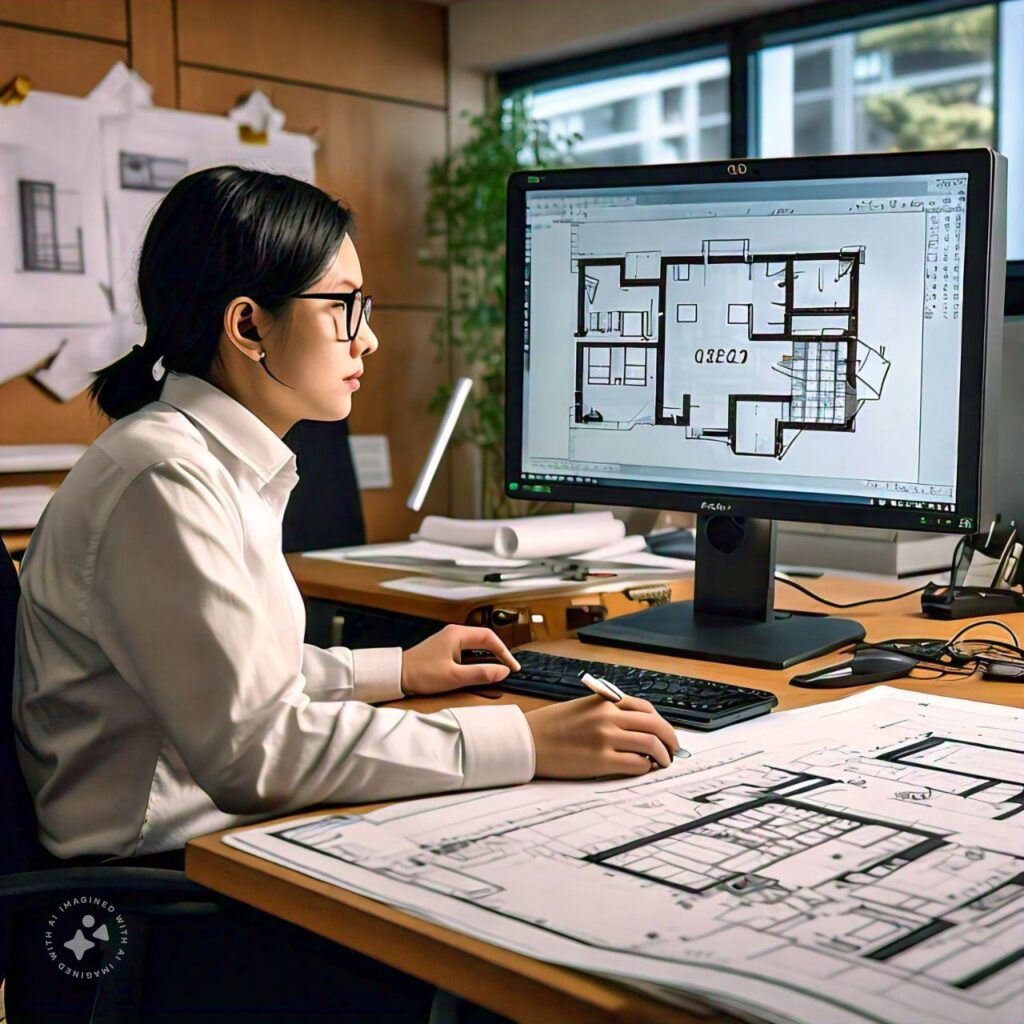Architectural Drafting and Planning have come in a protracted manner because of the days of hand-drawn blueprints. Now with technological improvements along with AutoCAD’s improvements, architects are using AutoCAD because the gold is fashionable in creating particular but efficient architectural designs for the whole lot, from residential houses to large commercial systems. AutoCAD plays an essential part in streamlining this process for increased accuracy while decreasing time consumption; its use also plays a pivotal role in managing multiple aspects of construction, such as electrical wiring systems, structural supports, and Plumbing Shop Drawing Consulting aligns perfectly when required for construction projects.
Architectural Drafting
Drafting is at the heart of any construction project. It transforms ideas into detailed plans that builders can follow to construct something. Drafters used to spend hours hand drawing these drawings by hand, but AutoCAD has revolutionized this process by offering faster edits, easier scaling, and more accurate depictions of designs than was ever previously possible. AutoCAD provides architects with various tools necessary for accurately drafting everything from floor plans and detailed section drawings with a precision that’s essential in any architectural endeavor.
Enhanced precision and accuracy
AutoCAD gives architects the power to produce detailed and precise drawings with unparalleled precision and accuracy. Dimensions can be measured down to fractions of an inch using this software, guaranteeing every element fits together seamlessly and preventing costly adjustments during construction due to small mistakes or mistakes caused by human errors. Furthermore, its accuracy helps prevent miscommunication between architect/client teams as well as design errors occurring making AutoCAD an indispensable resource in architectural drafting and planning.
Time-saving advantages
AutoCAD Can Save Time One of AutoCAD’s greatest strengths lies in its time-saving abilities. Compared with manual drafting, where changes require erasing and redrawing sections of plans to reflect modifications, AutoCAD provides fast edits and modifications; architects can easily change dimensions or layout without starting over from scratch; this speed makes AutoCAD particularly advantageous when dealing with construction deadlines which often coincide with costly delays; architects using AutoCAD are better able to meet project deadlines while upholding high standards of quality while meeting these tight project timelines while adhering closely.
Benefits of Framing and Estimating
AutoCAD Can Be Useful When Framing and Estimating AutoCAD has proven itself invaluable when it comes to framing and estimating services. AutoCAD’s detailed drawings create accurate measurements needed by framing estimators who need precise measurements in order to estimate materials needed for projects accurately; accurate drawings ensure smooth construction processes by giving precise material requirements estimates on time. Framing Estimating Services offers architects an effective tool that helps them navigate their projects through all their complexities effortlessly and efficiently. AutoCAD will only continue to become increasingly important as the construction industry changes, solidifying its place as an indispensable architectural drafting and planning solution.
Streamlining communication
Architectural projects often necessitate collaboration among multiple parties, including architects, engineers, contractors, and clients. AutoCAD simplifies communications among these groups by offering clear and detailed drawings that all participants in the project can understand; acting as an international language between different teams in working on one project seamlessly. Plus, AutoCAD drawings can easily be shared electronically for optimal communication during any phase of its creation or use – further increasing communication while decreasing instances of confusion during its course.
Visualizing Complex Designs
AutoCAD gives architects the potential to apply 3-D modeling in their designs which will provide more complete visualization. This function is particularly useful while dealing with greater complicated or tough-to-understand designs; with the usage of three-dimensional rendering, architects can better deliver their imagination and prescient to customers and other stakeholders and display exactly how the very last task will seem. Furthermore, AutoCAD supports rendering features that create realistic images of designs, further improving the planning stages of projects.
AutoCAD and Buildings Regulations
Building regulations compliance is an integral aspect of architectural planning, and AutoCAD plays an integral part. It allows architects to produce detailed drawings with information on materials, dimensions, and other essential factors affecting safety, which helps guarantee local regulations are adhered to and standards adhered to, saving both time and effort in updating drawings if anything changes in regard to either design or regulations.
Structural Integrity
AutoCAD plays an integral part in any building design. As engineers use AutoCAD’s precise tools for drawing structural components like beams, columns, and load-bearing walls in their evaluation of the strength of materials used and stress resistance of buildings – helping ensure structural integrity is preserved during construction – its precision ensures all pieces of a structure are designed and located accurately to minimize risks of failure in its execution.
AutoCAD in the Planning Process
Planning is at the core of every architectural project’s success, and AutoCAD plays an integral part by equipping architects with tools needed to produce detailed site plans, floor plans, and elevation drawings – which form the backbone of planning activities allowing architects to refine designs while making informed decisions regarding materials used, layout and structure of their building in its surroundings before construction begins. Visualization technology such as AutoCAD also gives them insight into how their building fits within its environment, so adjustments may need to be made prior to beginning physical construction if required before construction begins.
Integration With Other Systems
One of AutoCAD’s key strengths lies in its seamless integration with other architectural design and construction software systems, including electrical, HVAC, and plumbing software programs. When working on plumbing systems, for example, architects and engineers can utilize AutoCAD Drawing Services to produce shop drawings outlining exactly where pipes and fixtures will go for more coordinated design processes, ensuring smooth construction processes without collision between different systems.
Conclusion: Why AutoCAD Is Indispensable
Overall, AutoCAD has quickly become an indispensable part of architectural drafting and planning. From improving precision and accuracy to saving time and streamlining communication processes, its use provides numerous benefits that enhance overall design process efficiency. Plus, its integration capabilities ensure its place among modern architectural projects like high-rise buildings or smaller residential ones—its influence cannot be overstated!
AutoCAD software’s versatility in terms of estimating, planning, and structural integrity highlights its usefulness within the construction industry. Framing Estimation Services offers architects an effective tool that helps them navigate their projects through all their complexities effortlessly and efficiently. AutoCAD will only continue to become increasingly important as the construction industry changes, solidifying its place as an indispensable architectural drafting and planning solution.





